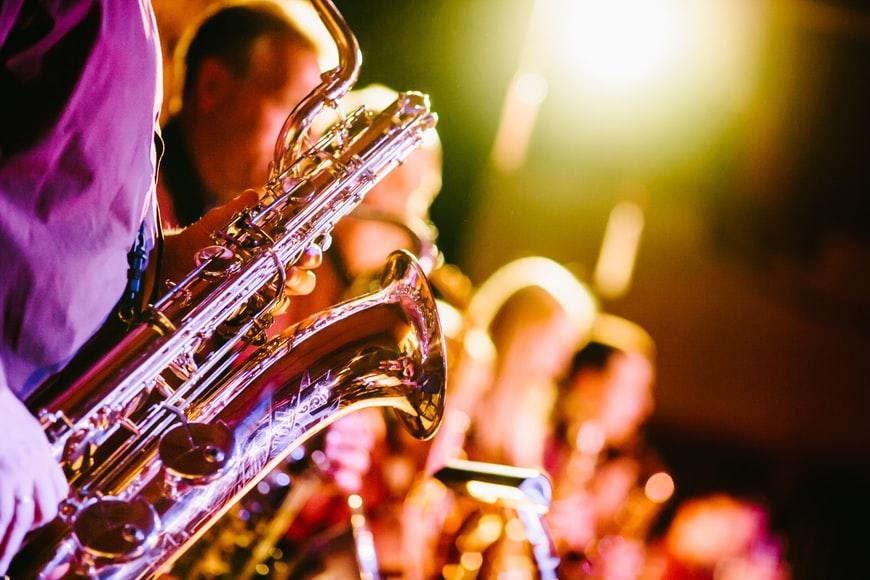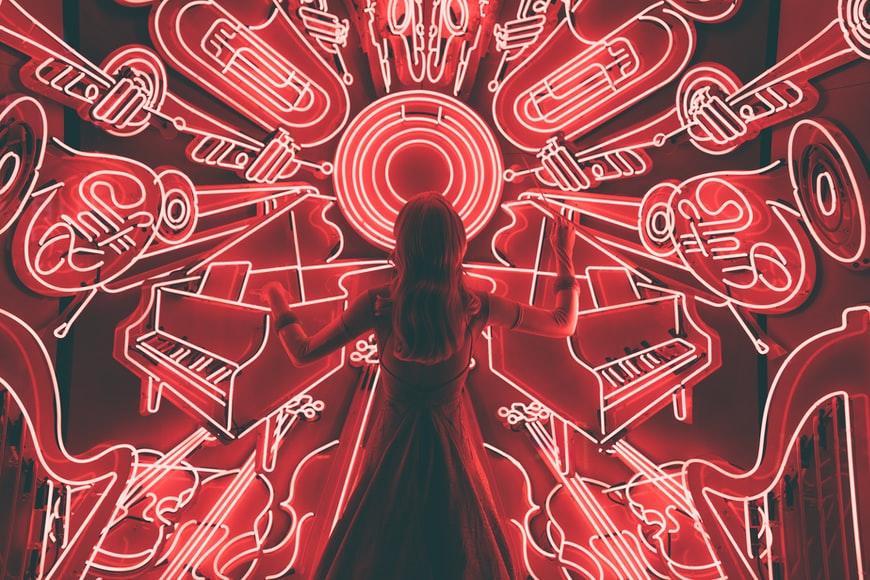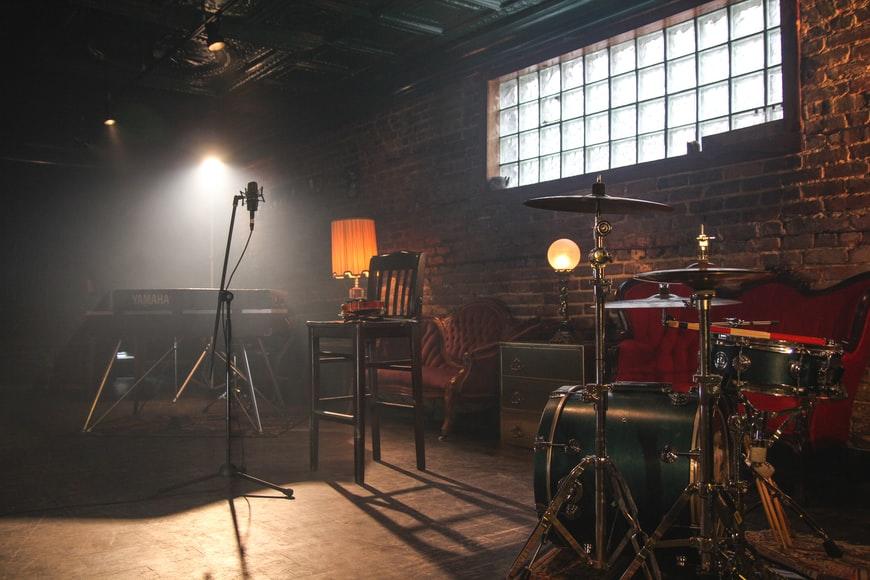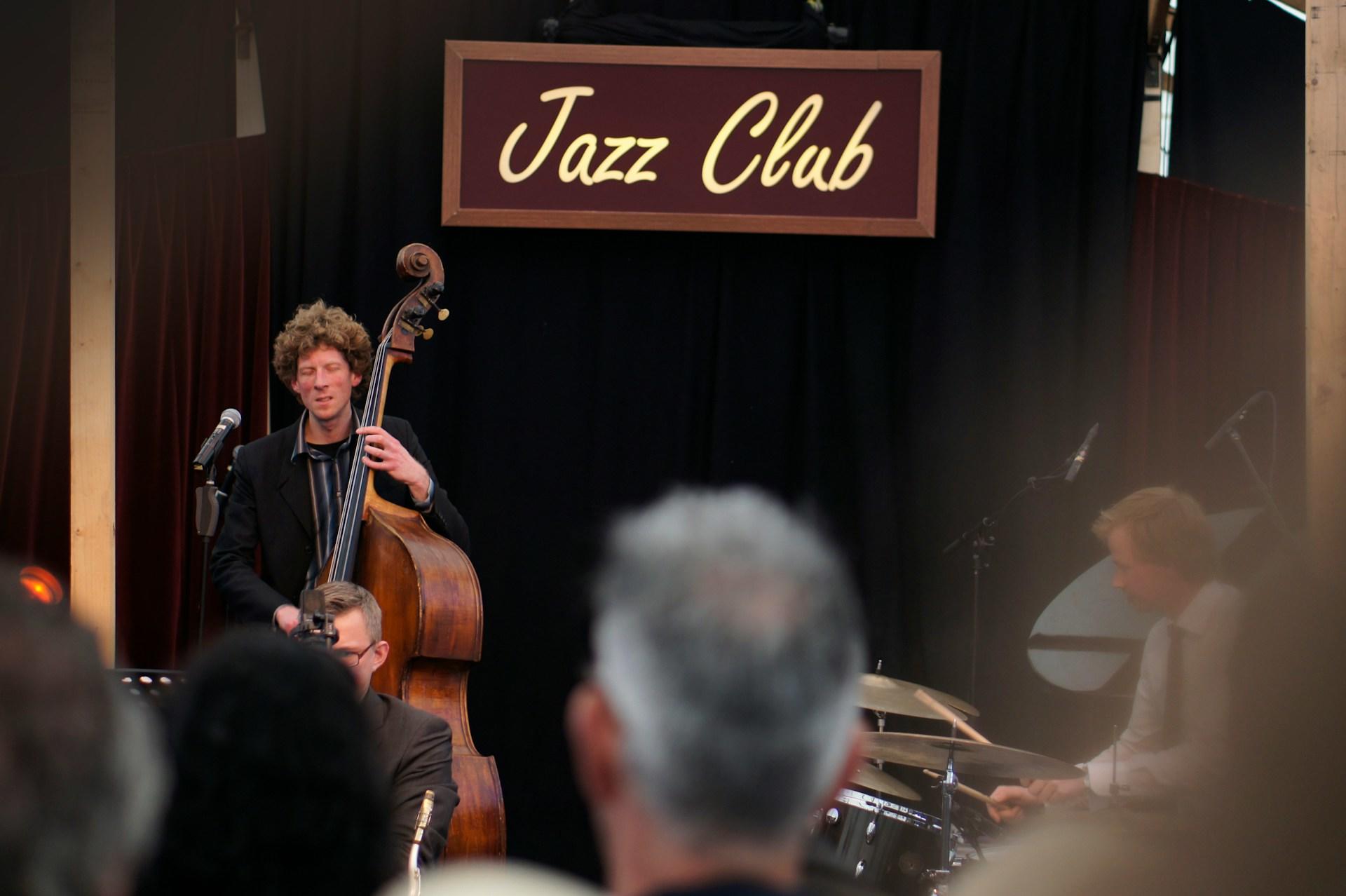Many argue that the birthplace of jazz was America. Years ago, on the grounds where enslaved people labored as captives, they also created songs to unwind, express themselves, vent, and keep the customs and culture of their African homelands alive.
It wasn’t titled jazz at the time, but the way they played and sang music was unique. Safe to say, this is jazz history.
When was jazz invented? In the early 1900s, the music created by the black American community became known as jazz in the South.
If you want to learn more about the impact and history of Jazz music in America, keep reading:

The History Of Jazz in America
New Orleans, Louisiana, is often regarded as the home of jazz. And even though slavery was abolished here in 1865, African Americans did not have the same privileges as white Americans.
However, black and white people enjoyed jazz – it knew no color. Therefore, by the 1920s, jazz was gaining prominence and incorporating elements from Africa and Europe.
In this article, you can find out about the dance classes near me on superprof.

What Distinguishes Jazz?
Jazz contains all of the components found in other types of music: It contains melody; that is, the song’s tune, which you can remember.
In addition, it has harmony, which adds notes to make the melody seem broader. Finally, it has a beat, which is the music’s heartbeat.
But it’s this great thing called spontaneity that distinguishes jazz.
Usually, there will be no music in front of you and no instructions to follow. There will be no lengthy debates with your bandmates. Instead, you have fun and play whatever you feel like.
It’s not that jazz tunes lack memorable melodies. Of course, they do, but it’s only a minor portion of what they do.
What makes jazz music unique is a theme that opens a song, but each artist subsequently improvises, playing all sorts of different notes:
- High
- Low
- Short
- Long
- Raspy
- Clear
The musicians who are not going solo are playing soothing music or comping. The melody then reappears at the end of the song.
Improvisation distinguishes a jazz tune from any pop song you could hear on the radio.
Another feature that distinguishes jazz is its commitment to the rhythm. Jazz players “swing” their notes, which implies they vary the duration of the notes.
Jazz Then And Jazz Now
Here are some distinctions between classic or older jazz and more current varieties of the genre, so you know what sort of jazz you’re listening to now:
Sound
The sound is the first and most noticeable distinction between current jazz and the earlier, more traditional versions.
Where previous jazz styles seem more mellow, calming, and typically lyrical, contemporary jazz can be quicker and, to a few, harsher.
Modern jazz, while frequently fantastic, maybe offbeat, challenging to follow, obtrusive, and probably not the type of music you’d want to play to calm your visitors.
In contrast, traditional jazz standards are frequently shorter than current jazz songs and feature the lyrical quality that modern renditions lack.
The Setting
Contemporary jazz’s association with dancing is one factor that works against it!
Good music and dancing frequently go together. But, unfortunately, though you can waltz to current jazz, you can’t truly dance to lighten up to the same.
Modern jazz allows you to do more professional dances – specifically, current interpretative dance. But, unfortunately, you can’t truly sway to a contemporary jazz song with your significant other.
Traditional jazz isn’t merely enjoyable to listen to. It’s also a fantastic place to relocate to! In addition, traditional jazz creates an atmosphere that is significantly more favorable to social events.
The Appeal
The ability of classic jazz to be pleasant to listen to and easy on the ears contributes to its enormous popularity.
Traditional jazz is people’s jazz. You don’t have to be a music connoisseur or a Berkley applicant to appreciate some terrific swing.
And as a result of its melodic intricacy, modern jazz may be difficult to follow and hence difficult to appreciate.
In addition, some compositions are exceedingly long, and the musical arrangements are a bit complicated.
To truly enjoy current jazz, you should have a rudimentary understanding of musical theory. Unfortunately, it is not suitable for everyone!


Elements Of Jazz
Although jazz lounge audiences may disagree on what qualifies as authentic jazz, at the primary level, you can identify it by a few distinguishing characteristics of jazz: improvisation, swing and syncopation, different voices, and bent notes and modes.
Improvisation
Since great jazz is typically created spontaneously, it necessitates highly specialized and unique procedures.
Although well-known jazz compositions contain identifiable melodies set to constant harmony changes, incredible jazz players—from trumpeter Louis Armstrong to saxophonists Lester Young and Charlie Parker—made their mark with their astounding spontaneity.
As a result, a jazz tune’s theme and transitions develop a framework and a starting point for experimentation.
Blues have the most important structure for improvising in jazz. A standard blues tune has 12 measures or bars.
Note: The most well-known type of blues is 12-bar blues, in which each bar, or measure, comprises four beats)
Syncopation And Swing
Swing is the melodic force that compels you to dance or move your feet in time to a good jazz piece. And the use of syncopation is part of what makes jazz swing.
Syncopation is the process of placing accents or accentuation at unexpected places.
When jazz truly swings, the rhythm strikes you, regardless of whether the performers highlight the beat by performing exactly alongside it for a few moments before or after at various times.
Distinctive Voices
Similarly, just as each human has a distinct voice, so does every jazz musician. With practice, you may recognize differences in:
- Phrasing
- Tone
- Cadenced sense
- Improvisational approach
- Other elements that differentiate each player’s melodic uniqueness
These distinct voices represent contemporary jazz, highlighting exceptional soloists and their incredible vocals.
Bent Notes And Modes
Jazz musicians frequently employ note mixtures that cannot be produced on a keyboard. For example, they bend a note (by twisting guitar strings or sliding between notes on a saxophone) to modify its intensity.
This also creates a melody that isn’t already a part of the western chromatic scale (start at Middle C on piano and travel key by key to B, right before the next C).
These 12 tones form the basis of the western chromatic scale). Bent notes provide jazz’s mystery, passion, and vibrancy.
Jazz Music’s Impact
Jazz infiltrated practically every facet of American society throughout the 1920s.
It impacted everything from poetry to the Civil Rights movement and fashion. Clothing styles evolved to make it simpler to dance to jazz melodies.
Jazz has influenced poetry significantly, with jazz poetry developing as a new form throughout the era. These poetries have the same emotional depth and spontaneous spirit as jazz music.
Through jazz, the women’s liberation movement became a significant cultural phenomenon. As dance halls and jazz clubs increased, women found a platform to express their dissatisfaction with traditional gender norms.
They were able to express themselves freely in terms of language and attire. Simultaneously, it provided them with an opportunity to connect with other like-minded women, sometimes for the very first time.
But jazz has not only impacted the United States, it has also shown an influence on modern global life. Here is how:
Jazz Has Influenced Modern Music
Jazz style evolved further in the twentieth century, mostly among African-American communities in the southern states of America.
Furthermore, it has been adopted by various genres, including pop, rock, and hip-hop, because of its appeal and intensity.
Freestyle rap, in which the vocalist improvises lyrics, is similar to the improvisation of jazz. Pop vocalists, such as Beyonce, also collaborate with jazz musicians.
Jazz’s Influence On Other Artists
New York is the most significant spot to visit for most jazz fans. After all, performers such as Billie Holiday and Charlie Parker were major attractions in New York, a legacy that continues today in many of the city’s top jazz clubs.
You don’t have to go far to notice the impact these performers had on the finest music of the twentieth century.
Jazz has impacted everyone from Pink Floyd and the Beatles’ to hip-hop musicians like Q-Tip.
Additionally, it has infiltrated musical culture to the extent that it is difficult to find those who have not been impacted by it at some time.
Your Brain Is Influenced By Jazz
Jazz, as per psychology specialists, might help you relax. Stress is memory’s arch-enemy, but it may be conquered by listening to jazz.
It can assist you in your studies or learning a new skill. Furthermore, listening to jazz is enjoyable!
Its origins may be traced back to the music of 19th-century enslaved Americans, for whom music provided emotional comfort. However, jazz is also a booster.
While performing, several regions of the jazz musician’s brain are activated, requiring them to think critically and imaginatively.
Literature Was Influenced By Jazz
Poets like E.E. Cummings, T.S. Elliot, and Carl Sandburg, were writing with less discipline and less concern for traditional form in the 1920s. Poetry was blossoming simultaneously as jazz was becoming more popular.
The two creative forms observed each other’s styles and collaborated to create jazz poetry, which featured direct allusions to jazz and emulated the music’s manner.

Jazz Schools In America
Many prospective jazz players contemplate studying at one of the many outstanding music institutions in the United States to begin their journey to become professional musicians.
Whether an undergraduate or graduate student, what you should prioritize when enrolling at a music university is a comprehensive course.
Many music institutions in the United States also provide the option to learn with well-known artists from the music industry; it is well worth researching the school administrators, faculty, and noteworthy alumni before applying.
The reputation of a music school and its ability to provide employment opportunities is also essential — graduates who have gone on to find success in the performing arts are frequently an indicator of a high-quality music school.
If you are looking for the best schools in the US, here is a list you should consider:
Manhattan School Of Music
Manhattan School of Music is a New York City-based private music institution. The school grants bachelor’s, master’s, and doctorate degrees in classical and jazz performing and production and a bachelor’s degree in performing arts.
Miguel Zenon, Ron Carter, and Ingrid Jensen are part of their faculty, and these are just some names from the list.
The Julliard School
The Juilliard School is a New York City-based private performing arts conservatory. The institution, founded in 1905, educates over 850 undergraduate and graduate pupils in theatre, music, and dance.
It is widely considered among the world’s most prestigious theatre, music, and dance academies.
Juilliard places a high value on quality and technical achievement, even demanding a music performance of specified classical pieces as part of the jazz audition process.
However, the competition is intense – with approximately 7-9 undergraduate jazz students admitted each year.
The New School
The New School for Social Research is a private research institution in New York City. It was formed in 1919 as The New School for Social Research, with the initial purpose of promoting academic independence and intellectual research and providing a home for modern intellectuals.
The New School has also gained popularity due to its alumni’s impact on modern jazz. For example, Larry Goldings is a graduate of this institute.
Consider enrolling in dance classes near me to explore your passion for dance and improve your skills. With a variety of styles and experienced instructors, you'll find the perfect class to match your interests and level.
Berklee College of Music
Berklee College of Music, located only a quick walk up the block from New England Conservatory, is probably the most well-known modern popular music college globally.
Its jazz origins have expanded to include the most popular modern music, as well as a wide range of majors such as:
- Music management
- Music production and engineering
- Music therapy
- Film score
This institute may be a good fit for people who wish to be a part of a broad and international musical community while also having a vast and free choice of possibilities in their music degree.
Wrapping It Up
If you are spontaneous, creative, and dare to go for something out of your comfort zone, consider jazz! Jazz is all about bringing something new to the table.
Require help with this music genre? Let instructors at Superprof help you out! Learn the basics of how to become experts at jazz music with online dance classes.
Résumer avec l'IA :
















